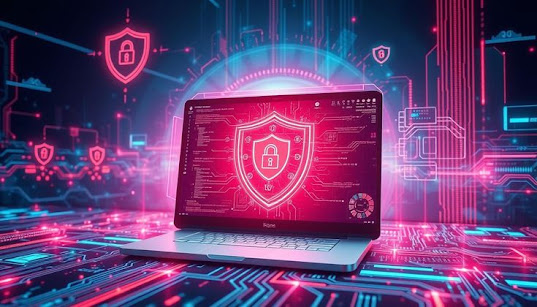How To Secure Your Computer Network From Cyberattack
How To Secure Your Computer Network From Cyberattack
Cyberattacks are no longer rare incidents—they are a daily threat to individuals, businesses, and governments. The good news is that securing your computer network isn't rocket science, but it does require awareness, effort, and consistency. This blog post explores the most comprehensive steps you can take to secure your computer network in 2025 and beyond.
A. Understanding the Threat Landscape
Before defending your network, it's important to understand what you're up against. The cyber threat landscape includes:
- Malware: Viruses, worms, spyware, and ransomware designed to infiltrate and damage systems.
- Phishing: Fraudulent attempts to steal sensitive data like passwords and banking details.
- DDoS Attacks: Overloading systems and networks with traffic to render them unusable.
- Insider Threats: Employees or contractors misusing access intentionally or unintentionally.
- Zero-Day Exploits: Attacks that use newly discovered vulnerabilities before they are patched.
Understanding the variety of threats is the first step in designing effective security controls.
B. Conducting a Network Risk Assessment
Every computer network is different. You must evaluate:
- What systems and devices are connected?
- Who has access to what?
- What data is most sensitive?
- What existing defenses are in place?
A risk assessment helps prioritize security measures based on what’s most vulnerable and valuable.
C. Securing Your Router and Gateway
Your router is the gatekeeper to your entire network. Here’s how to secure it:
- Change default login credentials immediately after setup.
- Use WPA3 encryption or at least WPA2 if your router doesn’t support the latest standard.
- Disable WPS (Wi-Fi Protected Setup) as it can be vulnerable to brute-force attacks.
- Keep router firmware updated to patch known vulnerabilities.
- Set a strong SSID (network name) that doesn’t reveal your identity or brand.
If your router is not secured, everything inside your network is at risk.
D. Segmenting the Network
Network segmentation is about isolating devices and data flows. You can do this by:
- Using VLANs (Virtual Local Area Networks) to separate departments or device types.
- Setting up a guest Wi-Fi for visitors that doesn’t connect to your main network.
- Separating IoT devices from sensitive workstations.
Segmentation limits the damage if a part of your network is compromised.
E. Installing Firewalls and Intrusion Detection Systems
Firewalls are essential. They monitor and filter incoming and outgoing traffic. Use both:
- Hardware firewalls at the router level for broad traffic control.
- Software firewalls on individual systems to prevent internal threats.
IDS/IPS (Intrusion Detection/Prevention Systems) help detect and stop unusual activities like port scanning or DDoS attempts.
A firewall is your first layer of defense against unauthorized access.
F. Updating Software and Patching Vulnerabilities
Cybercriminals exploit outdated systems. Ensure:
- Operating systems are set to update automatically.
- Third-party applications like browsers, PDF readers, and media players are updated regularly.
- Firmware for routers, switches, and IoT devices is current.
Unpatched software is a welcome mat for hackers.
G. Enforcing Strong Password Policies
Use the following password practices:
- Minimum of 12 characters with letters, numbers, and symbols.
- No reuse across accounts.
- Changed regularly (every 3-6 months).
- Use of password managers like Bitwarden or 1Password.
Passwords are your first line of defense—make them count.
H. Enabling Multi-Factor Authentication (MFA)
MFA adds an additional layer of security by requiring something you know (password) and something you have (OTP, authenticator app).
Even if your password is compromised, MFA can prevent unauthorized access.
I. Using Antivirus and Anti-Malware Tools
Install reputable software like:
- Windows Defender (built-in, reliable)
- Bitdefender
- Kaspersky
- Malwarebytes
Set them to update and scan automatically.
J. Encrypting Sensitive Data
Use encryption at rest and in transit:
- BitLocker (Windows) or FileVault (macOS) for disk encryption.
- SSL/TLS for web and email communication.
- VPNs for secure remote access.
Encryption turns your sensitive data into unreadable gibberish for unauthorized users.
K. Backing Up Regularly
Backups help you recover from ransomware or data loss. Use the 3-2-1 rule:
- 3 copies of your data
- 2 different storage media
- 1 offsite or cloud backup
No matter how good your defenses are, always have a backup plan.
L. Monitoring Network Traffic
Use network monitoring tools like:
- Wireshark
- PRTG Network Monitor
- SolarWinds
Look for unexpected spikes, unknown IP addresses, and unusual port activity.
M. Educating Users
Even the best technology can be undone by human error. Train everyone in your network to:
- Spot phishing emails
- Use secure websites (HTTPS)
- Lock screens when away
- Never share credentials
Security awareness is often the most underused but most effective tool.
N. Creating an Incident Response Plan
If an attack happens, you need a plan. Include:
- How to isolate affected systems
- Who to contact (internal/external)
- Steps to analyze and remediate the issue
- Post-incident review and improvement
Preparation is key. A clear response plan reduces panic and damage.
O. Keeping Up with Threat Intelligence
Stay updated on new threats by following:
- US-CERT Alerts
- Krebs on Security
- Threatpost
- Reddit communities like r/netsec
P. Securing Remote Access
Remote work is here to stay. Secure it by:
- Using VPNs for access to internal systems
- Restricting remote desktop services
- Logging all remote sessions
Q. Reviewing and Testing Your Security Regularly
Don't set it and forget it. Review your security policies, test your systems with:
- Penetration testing
- Vulnerability scans
- Red team vs blue team simulations
Final Thoughts
Cybersecurity is not a destination—it’s an ongoing process. As cybercriminals evolve, so must your defenses. By taking a layered, proactive approach to computer network security, you can significantly reduce the risk of cyberattacks in 2025 and beyond.
Stay vigilant. Stay informed. And above all, stay protected.




Comments
Post a Comment